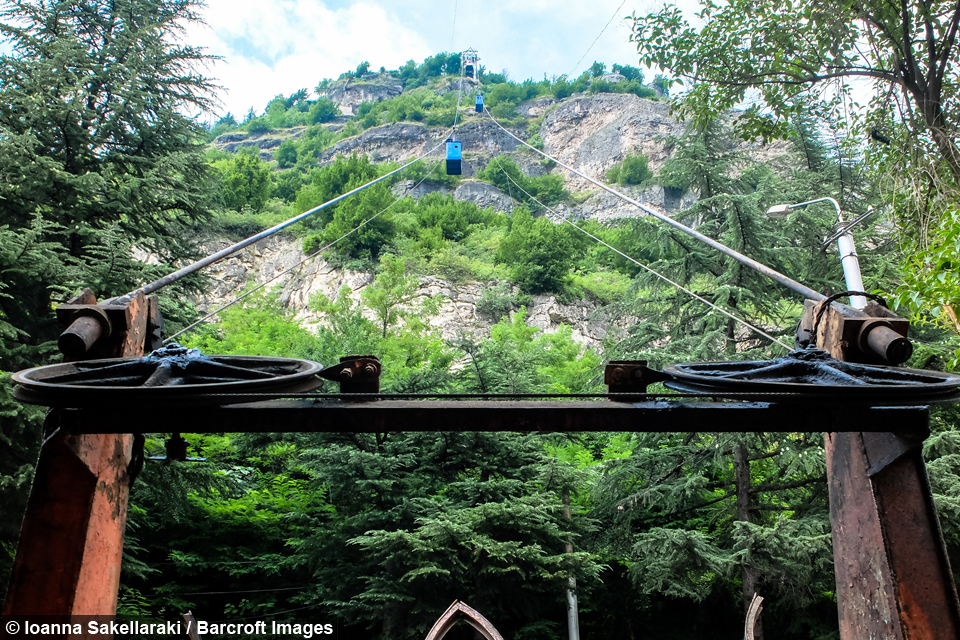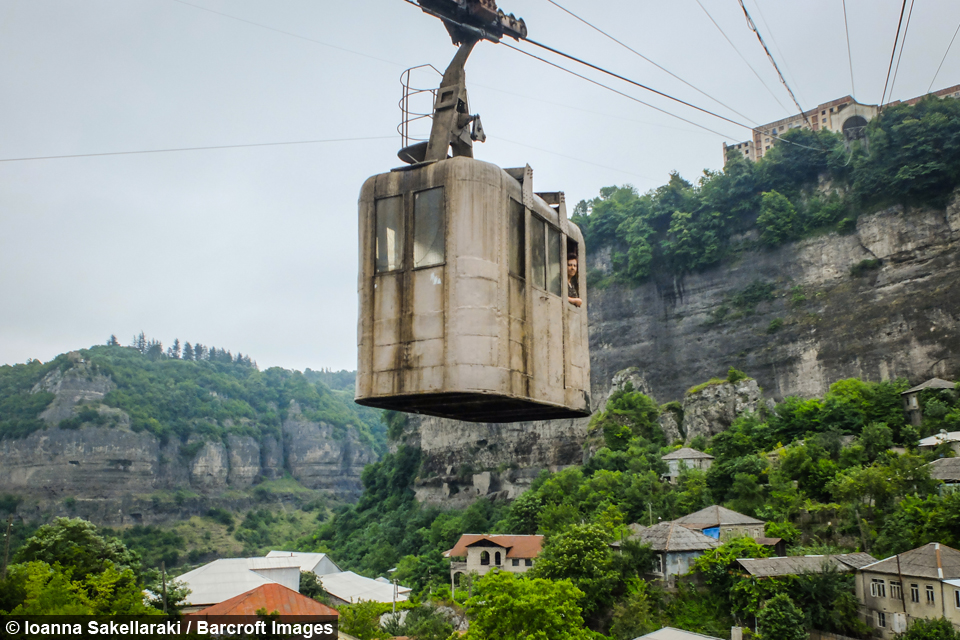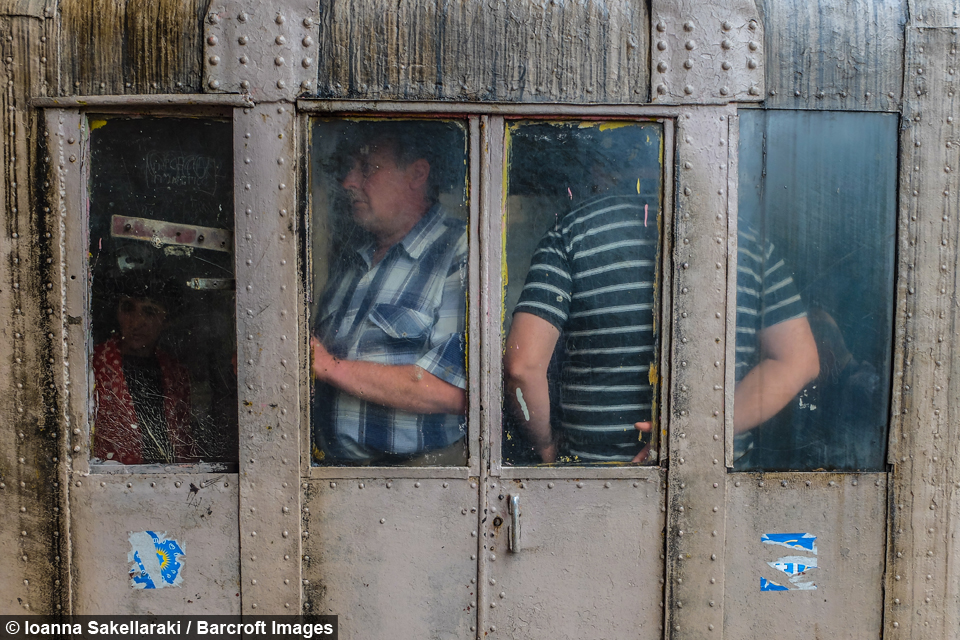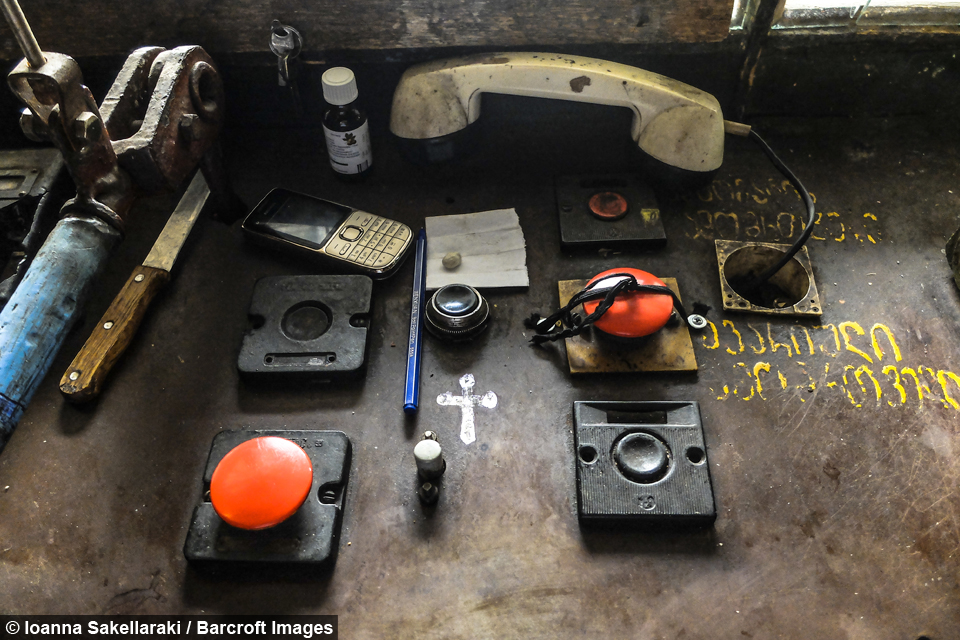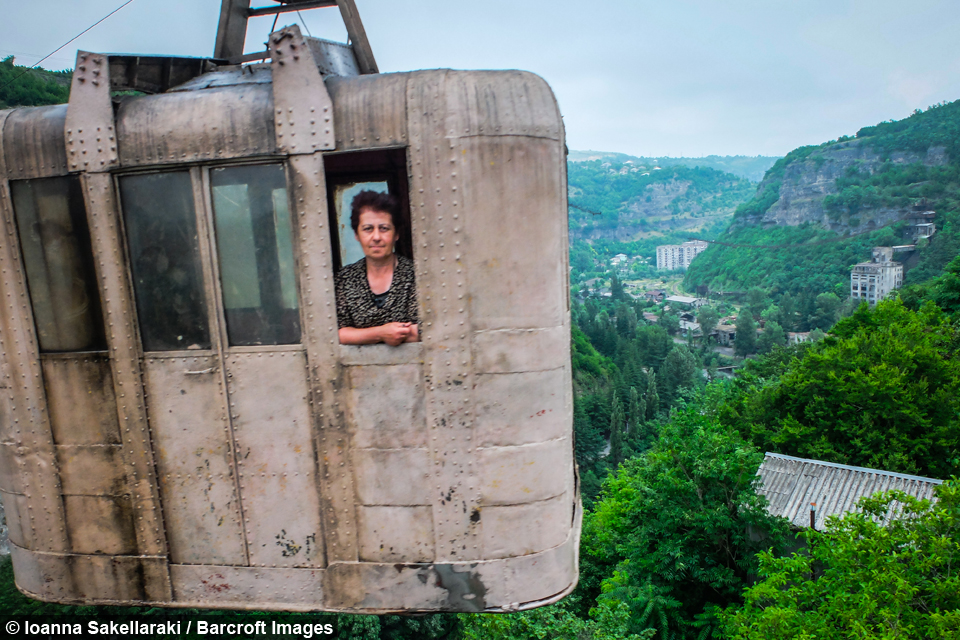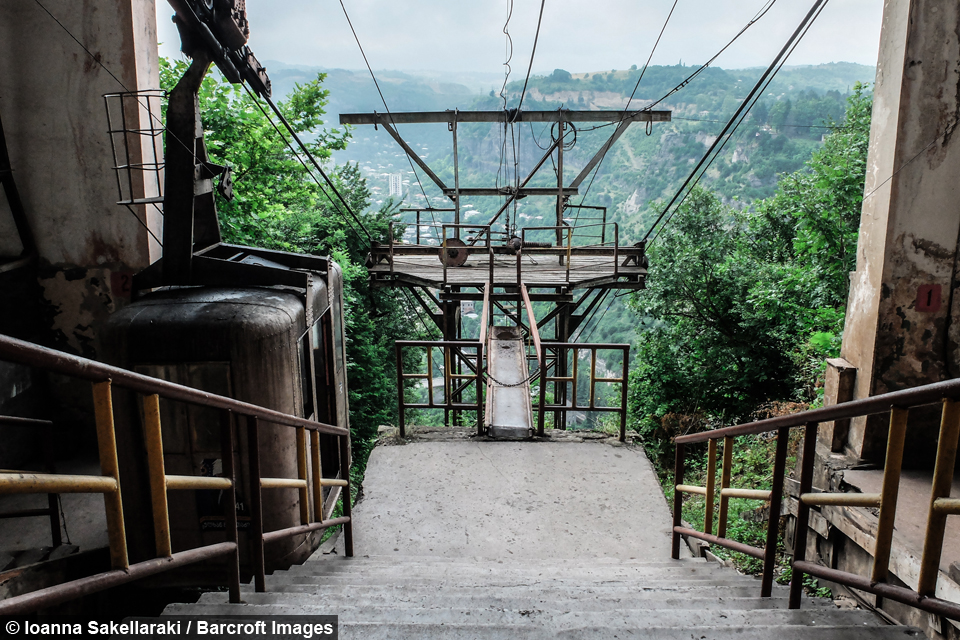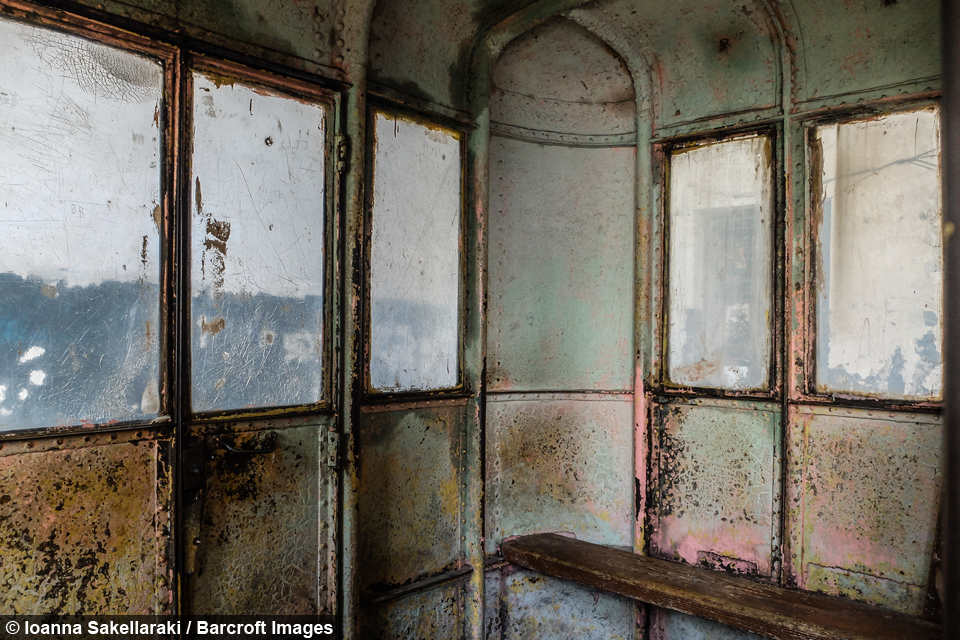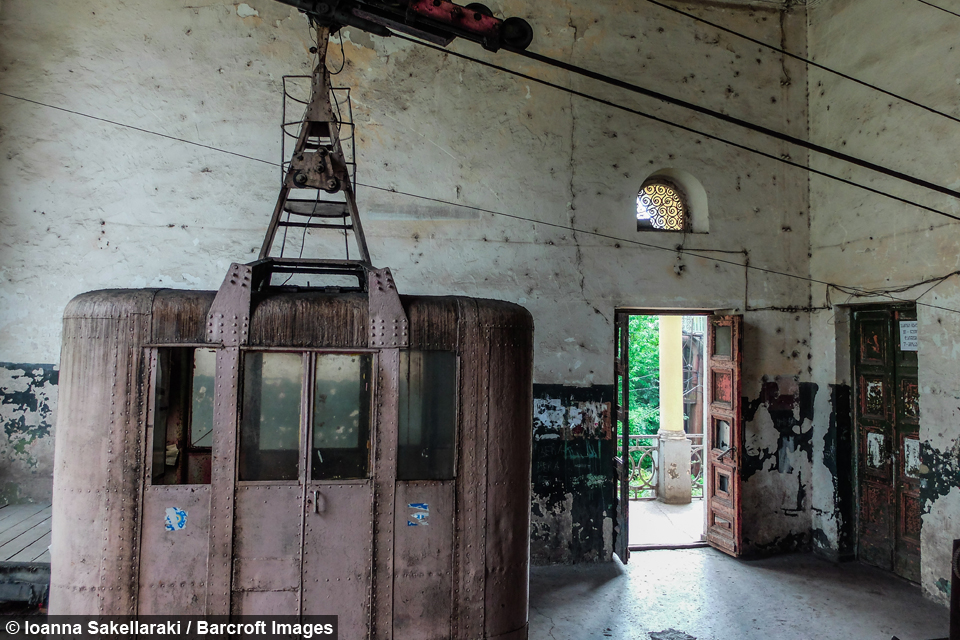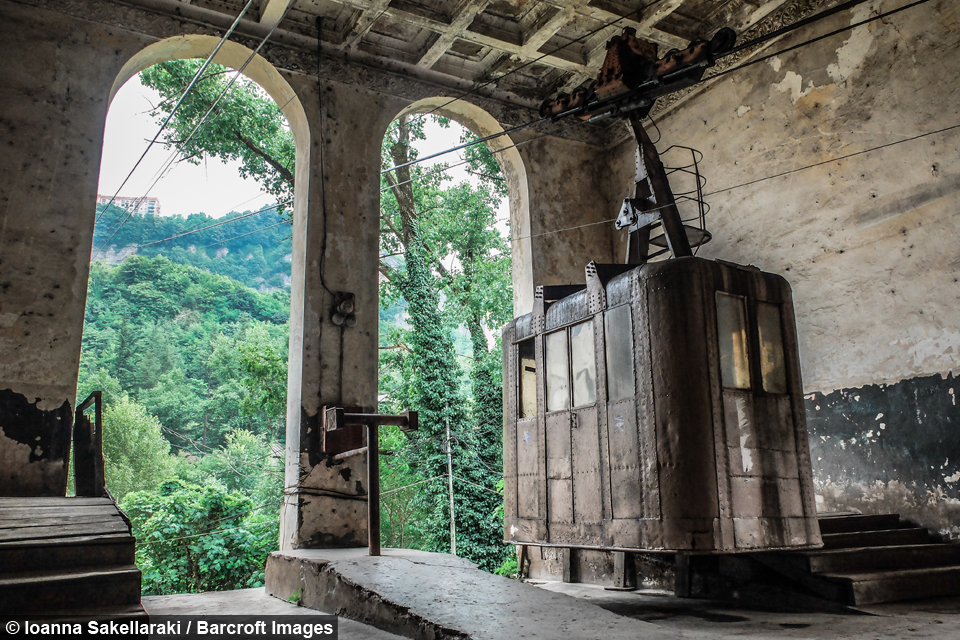Chiatura's rope road: Soviet cable cars vital to mining town
By Bunmi Adigun @Bunmi_Adigun
Scroll down for the full story
Located in the town of Chiatura, Georgia, you would be forgiven for thinking you have been teleported back to the Cold War period.
Built in the 1950s by the Soviet Union to transport workers around the mining town quicker, the cable cars transport visitors to a bygone era.
Photographer Ioanna Sakellaraki, 26, travelled to the old mining town to snap one of the world’s longest cable car networks - which boasts 17 functioning cabins and car lines that span more than 6,000 metres (3.7 miles).
Ioanna said: “The mining town of Chiatura, with its post-Soviet identity, had always been one of the 'must-visit’' destinations on the top of my list, mostly due to its interesting historical and political background dating back to the late 1950s and the Stalin era. I finally found the time and courage to visit it during my stay there.”
Dubbed the ‘rope road’, the cable car network was built as a way to efficiently transport workers to and from the mines during the height of production in the 50s - and was needed due to the town’s rugged landscape.
“Six decades after their original construction, even if rusted away, they are considered the quickest way to get around,” added Ioanna.
At its height, Chiatura was responsible for 60 per cent of the world’s manganese production and was considered an important town in the Soviet Union.
Despite their condition, the cable cars are still in surprisingly good working order and are as important to the local residents today as they were 60 years ago.
Ioanna said: “The ride was relatively smooth, even if most of the cable cars have rusted away throughout the years and are crumbling during the ride through the valley.”
The fall of the Soviet Union brought an abrupt end to most industry in the area, with the cable car network acting as a time capsule.
Each of the powerful images helps to convey how important the network is to the locals and is seen as a source of pride as they remind them of the town’s rich history.
“The cable cars of Chiatura are a symbol of the city’s identity and a landmark of its past,” said Ioanna.
The greek born photographer, who currently resides in Brussels, Belgium, was in the region as part of a project working with Internally Displaced People (IDPs).
Ioanna explained: “I spent seven months working with Internally Displaced People (IDPs) in different regions of Georgia. The context was a European project on the subjects of culture, conflict and identity as a result of the 1990s and more recent 2007 wars that took place in the region.”
